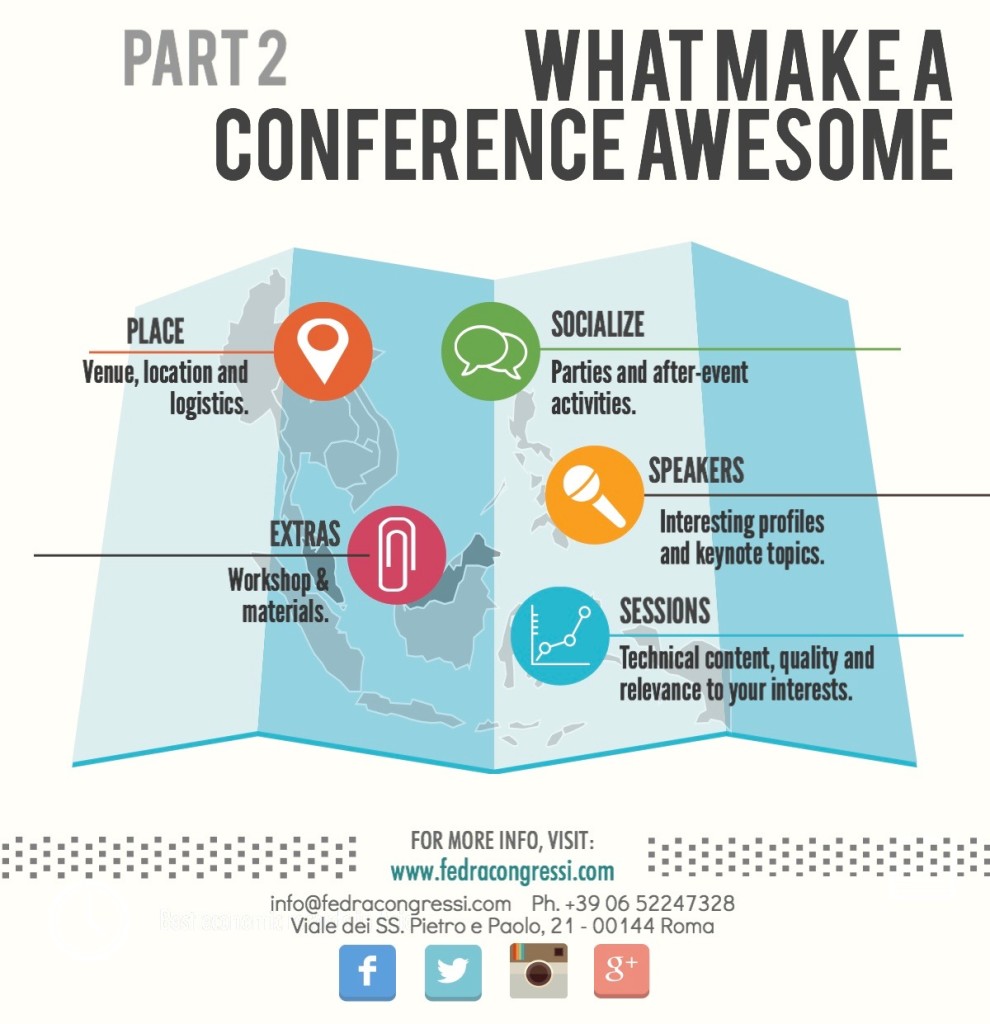People say they attend conferences for the networking opportunities, but once they arrive, they fail to instigate the types of conversations and interactions that lead to long-term and mutually-beneficial relationships.
We chose 10 things you can do to make sure your conference is interesting for everyone. When people experience the human factor in a way that benefits them, they are far more likely to return next year, and they will bring their friends.
Here the second part:
![What make a conference awesome – Part 2 [Infographic]](https://www.fedracongressi.com/fedra/wp-content/themes/avant/images/blank_blocks_img.png)

![What make a conference awesome – Part 1 [infographic]](https://www.fedracongressi.com/fedra/wp-content/uploads/2016/02/Untitled-Infographic-3-954x1024.jpg)